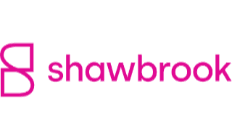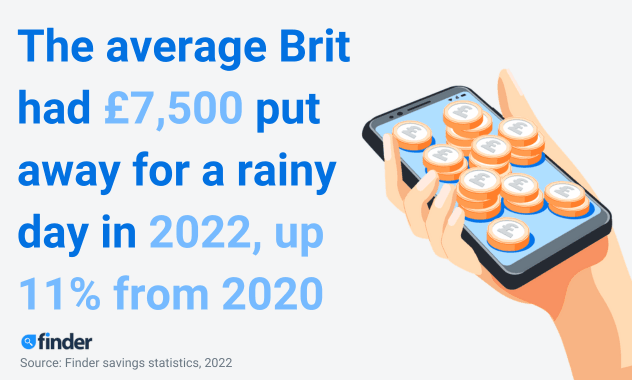







Is my money safe?
The Financial Services Compensation Scheme (FSCS) guarantees that it will step in to compensate the first £85,000 (£170,000 for a joint account) you have saved with a UK-authorised bank, building society or credit union in the event that the business goes bust.
Fixed rate bonds allow you to commit your funds for a set time in return for a higher interest rate. But because deposits are locked-in for the duration of the bond, they won’t be right for everyone. In this guide we’ve set out everything we think you need to know before opting for a fixed-rate bond. We also have a guide on fixed-rate cash ISAs which are tax-free and also offer a set rate for a certain period of time (we explain the differences between these two popular acount types here).
What are fixed-rate bonds?
Fixed-rate bonds are a popular type of savings account that can offer savers a higher interest rate in return for leaving a lump sum of money with a bank for an agreed timeframe. Because the interest rate is “fixed”, it won’t change even if market conditions (and the Bank of England base rate) change. That means you’ll know from the outset exactly how much you’re going to earn on your savings.
Their main feature is that your money is locked away for a pre-defined period of time (normally between 6 months and 5 years). You can’t withdraw it during that period. The bank will typically only release the funds before maturity if the account holder dies or goes bankrupt. In rare cases, a bond product might offer flexibility around early withdrawals, but that will always be with a penalty. The penalty is generally equivalent to a specified number of days worth of interest – say, 90. If you’ve had the bond for less time than that, and you withdraw everything, then you could theoretically walk away with less than you put in.
Since the bank has the (near-) certainty that your money will be at its disposal for a set chunk of time time, it’s able to offer you a better rate than what you’d get with, say, an easy-access savings account.
Fixed-rate bonds are good if you have a lump sum of money that you want to do something sensible with, and you don’t mind locking it away for a set period of time.
Use our comparison table to see which ones have the best interest rates today and if they’re worth it.

"After many years of low interest rates, the Bank of England base rate is now at its highest level for 15 years. This means savings rates have gone up too so now could be a good time to take out a fixed-rate bond.
However, there’s lots to consider before you decide to open one. The main thing that will determine whether it’s worth it is what will happen to interest rates in the future, which is almost impossible to predict with accuracy. Experts currently think the base rate may start to fall some time in 2024, but there’s no guarantee.
If there are more increases to come, you might be better off waiting a while before you commit to a fixed interest rate as you could end up earning less than if you’d put your money somewhere else. However, at the start of the term at least, you’ll be earning more than you would from an account that gives you easier access to your money, which will make up for when – or if – this difference narrows or even disappears.
It’s not just about the interest rate you’re getting though. You might want to lock your money away so you’re not tempted to spend it or because you know that for the next year or two you won’t need access to it."
How do fixed-rate bonds work?
Once you’ve compared and picked the fixed-rate savings account you want to open, things are pretty straightforward.
- Application. With most financial institutions, you can apply online by putting in your data and going through an ID check. Some financial institutions don’t allow you to open a fixed-rate savings account with them if you don’t have a current account too. If the account you want to open is with a bank you’re already a customer of, you can often do it directly from your banking app.
- Deposits. Once the account is open, you have a short period of time to fund it (normally less than one month). After that, you can’t make any more deposits or withdrawals to your account until it matures. If you really do have to access the funds, it may be a slow process and you’ll incur a penalty (usually forfeiting interest earned).
- Interest. The interest will either be paid out “on maturity” when your lump sum’s released, or, in some cases, interest can be “paid away” monthly to an account that you nominate. It’s more lucrative in the long run if the interest is allowed to compound in the bond itself itself, but some people will be looking to generate a monthly income instead.
- Withdrawals. We can’t stress it enough: only put money into a fixed-rate savings account if you’re 100% sure you won’t need to access it. Because no. You. Cannot. Withdraw. Your. Deposit. In. Advance. More precisely, in some cases, you just can’t at all; in others, you’ll be charged a fee and your account will be closed.
- When the account matures. You’ll be able to access your money and you usually can choose to have it paid back into your current account (and then potentially look for a new deal) or “renew” your current deal by opening a new fixed-rate bond with the same financial institution. There’s no guarantee you’ll get the same interest rate as before though.
How long should I keep my money in a fixed-rate bond for?
While the duration of the fixed-rate bond may vary from bank to bank, generally the periods of time that you can put your money in a bond for are 6 months, 1 year, 18 months, 2 years, 3 years or 5 years.
If you think that savings interest rates are likely to rise over the coming months and years, then you might prefer to fix for a shorter time. Conversely, if you think that savings interest rates are coming down, then you might be keen to fix at today’s rates for as long as you can. For larger sums or longer terms, a bit of research in where rates are headed can be time well spent.
Bear in mind that the longer you lock your money away for, the greater the chance that your circumstances could change, and you might wish you could access your money. So if you think your circumstances could well change, consider a shorter term, or locking less away. Of course you generally can withdraw your savings in any case, but if you do so before the end of the fixed-term, you’ll incur a penalty (typically losing your interest).
Should I get a fixed-rate savings account?
The first thing to do is make sure a fixed-rate savings account really is what you want. The interest rate is usually better than what easy-access accounts offer, but you’re giving up access to your money, so always consider whether it’s worth it or not.
Remember that if inflation is higher than the interest rate you’re earning, the value of your savings is actually falling over time.
Top deals for fixed-rate savings accounts pay up to 5.3% a year. At the moment the top rates on easy-access savings account are very similar to fixed rates. But remember that the easy-access rate is likely to fluctuate whereas the fixed one won’t, so then the question is whether it’s worth losing access to your money for the sake of a guaranteed return.
A longer period generally means a better rate, though at the moment, the opposite is true because interest rates are expected to fall from their current level (the banks factor this in when deciding what rates to offer on fixed deals).
While the loss of access to funds is generally seen as the price you pay for a better rate, it could also be seen as an advantage – if you’re tempted to dip into your savings and splurge on something, for example, you simply won’t be able to.
It’s an unusual time because the rates on fixed-rate bonds are similar to those on easy-access accounts, but the upside of a fixed deal is that you get a guaranteed return on your savings.”
How to choose the best fixed-rate bonds
If you do decide that a fixed-rate savings account is what you need, comparing and picking the right one for you shouldn’t be excessively complicated. Here’s how to tackle it:
- How long can you do without the money? A longer period generally means a better rate (with the caveat that rates could rise when your money’s locked in).
- Compare rates. Obviously, the higher the better.
- Check the eligibility criteria. Make sure you can apply for the account you’re looking at. With some banks, you’ll need to open a current account first. Also, keep in mind that many fixed-rate savings accounts have a minimum deposit (this could be £50 to £500 or more).
- Look at where/when the interest is paid. Monthly, annually or at the end? Into the account itself or somewhere else?
- How much are you going to earn? This will basically depend on the interest rate, but to make a final decision it’s worth trying to figure out how much you’ll get out of the account with the amount you can afford to put aside.
- What’s the withdrawal penalty? While it’s a bad idea to withdraw savings from a fixed-rate account before it matures, make sure you understand whether it’s possible to take your money early and the penalty for doing so.

Are fixed-rate savings bonds safe?
Yes, they generally are, providing they’re issued by a UK-authorised bank or building society and you’re saving below £85,000. Always make sure that the deal you’re looking at is covered by the FSCS (Financial Services Compensation Scheme), which will protect your deposits up to £85,000 if the financial institution providing the account were to go bankrupt. If you have more than £85,000 in savings, it’s advisable to spread it between accounts at different financial institutions, just in case.
Unlike some investment products where your investment can go down as well as up, fixed-rate bonds guarantee a set return. This might not match the rate of inflation, but it’s better than sticking your money under the mattress.
Which are the best fixed-rate bonds at the moment?
Our best fixed-rate bonds are the highest interest rates available for each type of bond we specify. To get the latest rates, we use Moneyfacts data, which covers nearly the full market of savings products and is checked and updated daily. We don’t include accounts from private banks.
All the bonds in our list have savings protection – for most, this is the Financial Services Compensation Scheme (FSCS). Other schemes include that of NS&I, which is 100% backed by HM Treasury, and the Gibraltar Deposit Guarantee Scheme.
- 6-month fixed-rate bonds 0% AER ()
- 1-year fixed-rate bonds 4.44% AER (Vanquis Bank Ltd 1 Year Savings Bond)
- 18-month fixed-rate bonds 4.4% AER (DF Capital 18 Month Fixed Rate Deposit (Loyalty Iss 25))
- 2-year fixed-rate bonds 4.45% AER (JN Bank 2 Year Fixed Term Savings)
- 3-year fixed-rate bonds 4.45% AER (JN Bank 3 Year Fixed Term Savings)
- 4-year fixed-rate bonds4.4% AER (JN Bank 4 Year Fixed Term Savings)
- 5-year fixed-rate bonds 4.52% AER (JN Bank 5 Year Fixed Term Savings)
An overview of our fixed-rate bonds comparison
| Rates up to | 4.52% AER |
|---|---|
| Number of accounts | 746 |
| Terms | 1 month - 7 years |
| Minimum investment | £1 |
| Maximum investment | £10,000,000 |
| Opening options | Branch, website, mobile app, post, telephone |
Bottom line
You can usually get better rates of interest by putting your money into a fixed-rate bond versus other types of account but you need to be able to lock your money away for the term of the bond. However, if interest rates go up during this period, you could end up losing out in the long run.
If you’re able to invest long term – for at least five years – you could consider investing in the stock market instead but there’s a risk that the value of your investment could go down instead of up. It’s a good idea to speak to an independent financial adviser before you decide to do this.
Finder survey: What proportion of your savings would you want to keep instant access to, even if it meant a lower interest rate?
Response | % of respondents |
|---|---|
| N/A | 10.71% |
| Most of it | 17.86% |
| Less than half of it | 17.86% |
| Half of it | 23.21% |
| All of it! | 30.36% |
Frequently asked questions
Read more on Fixed Rate Bonds
-
Fixed-rate bond calculator
See what you could earn monthly, annually or at bond maturity with our fixed-rate bond calculator integrated with live bond rates.
-
Compare the best 18-month fixed-rate bonds
Discover more about 18-month fixed-rate bonds.
-
Compare monthly interest fixed-rate bonds
Discover more about how monthly interest fixed-rate bonds work.
-
Compare the best 6-month fixed-rate bonds
Learn more about 6-month fixed-rate bonds and how to open an account.
-
Discover the best 3-year fixed-rate bonds
Discover how to find the best fixed-rate bonds and how they compare to other savings accounts.
-
Best 5-year fixed-rate bonds
Discover all you need to know about 5-year fixed-rate bonds, including how to find the best one for you.
-
Best 2 year fixed rate bonds
If you’re planning to save your money into a fixed rate bond, we take a look at how you can find the best 2 year option.
-
Best 1-year fixed-rate bonds
How to get the best 1-year fixed-rate bond. Here’s what you need to know.


